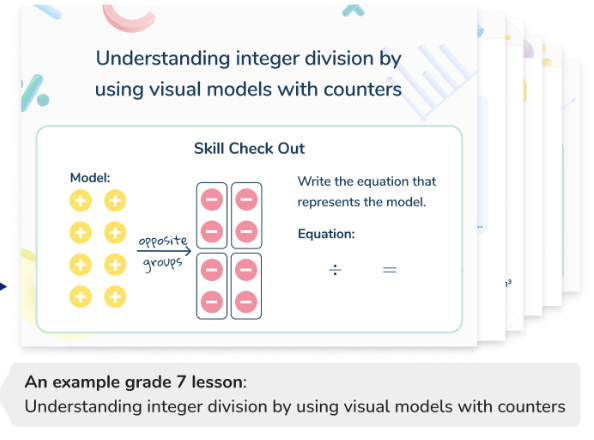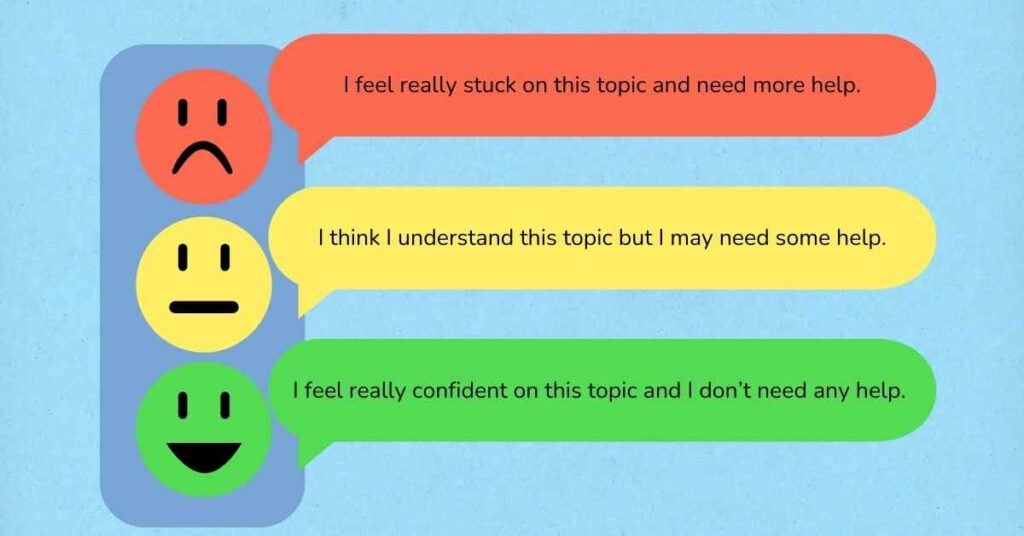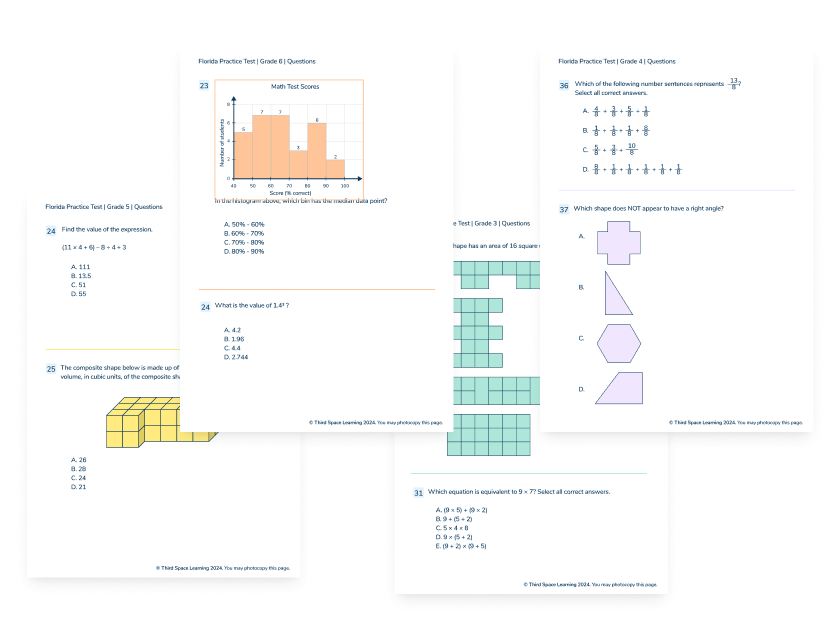10 Exit Ticket Ideas To Use In The Classroom [Includes Exit Ticket Templates]
Exit tickets are an effective assessment tool for gauging student learning and grade-level progress. They are a great way for students to demonstrate their understanding at the end of a lesson or topic, providing valuable feedback to both the teacher and themselves.
In this article, we will be looking at how exit tickets can be used most effectively and the benefits of using them. Here you will also find examples of exit tickets and exit ticket templates to use in the classroom.
- What is an exit ticket?
- How exit tickets fit within your assessment strategy
- How to use an exit ticket
- How to use exit tickets to adapt your teaching
- When to use an exit ticket
- The benefits of exit tickets
- 10 exit ticket ideas and examples to use in the classroom
- How to present exit tickets
- Tips for teachers when using exit tickets
What is an exit ticket?
An exit ticket, also known as an exit slip, is a short informal assessment activity, typically given to students at the end of the lesson.
The purpose of an exit ticket is to quickly assess students’ understanding of the lesson objectives. They provide immediate feedback to both the teacher and the student, enabling gaps in knowledge to be identified and addressed.
An example of an exit ticket is a piece of paper containing a few questions related to the work completed. Students complete these questions and hand them back to the teacher.
Exit tickets may also contain a section for the students to make a note of how they found the questions, enabling teachers to quickly assess how each student has performed and see each student’s self-assessment of the task.
5th Grade Exit Tickets — Number and Operations - Fractions
Check your 5th grade students' understanding of Number and Operations with these ready-to-go exit tickets. Download and print for individual students, or display in class to assess knowledge.
Download Free Now!How exit tickets fit within your assessment strategy
Although both formative and summative assessments can vary depending on the context in which they are used, formative assessment is widely recognised as a low-stakes form of testing. Teachers can use formative assessment to provide feedback to their students and inform their teaching.
An exit ticket is a type of formative assessment: an informal assessment used by teachers to assess their students. This type of assessment differs from a summative assessment, which is usually a more formal graded test such as an end-of-a-topic exam. Find out more about formative assessment examples and assessment for learning examples on our blog.
For example, by using an exit ticket, teachers can quickly identify whether the whole class will need to revisit the concept, or whether individuals or small groups require extra support.
Read more: What is formative assessment?

Meet Skye, the voice-based AI tutor making math success possible for every student.
Built by teachers and math experts, Skye uses the same pedagogy, curriculum and lesson structure as our traditional tutoring.
But, with more flexibility and a low cost, schools can scale online math tutoring to support every student who needs it.
Find out moreHow to use an exit ticket
Exit tickets are an excellent assessment for learning strategy for progress monitoring students’ level of understanding in any particular lesson. For exit slips to be effective, you should consider where they will fit into lesson plans and how best to use them.
Here is a step-by-step guide on how to effectively use exit tickets:
1. Plan ahead
Plan the day’s lesson as normal and identify the overarching objective you want to cover and assess. Create the exit ticket based on today’s lesson objective, designing a problem or some questions in line with what your students have covered during the lesson.
2. Deliver the lesson
Deliver the lesson, ensuring your students have a good understanding of the objective and how they will know they have been successful.
3. Present the exit ticket
Towards the end of class, present the exit ticket. Ensure your students understand that the purpose of the ticket is to assess their understanding of the lesson and identify any students who may need extra support.
Exit tickets can be paper slips, completed on a small whiteboard or completed digitally, if this is an option. The exit ticket could also take the form of whole-class hinge questions, either written or verbal. Students may self-assess exit tickets to check their own understanding.
4. Review responses
Collect the student responses in – manually, verbally, or digitally (if the children have completed the tickets on a digital device). Review the tickets to check your students’ understanding and identify who requires additional support.
5. Provide feedback
Students must understand where support is needed, but also need to receive recognition when the objective has been successfully achieved.
6. Use data to inform future planning
Exit tickets are an effective way of tracking student progress. Use the assessment data from the tickets to determine the next steps – whole class recap, small group, or individual intervention.
Keep track of the progress of the students, such as those who successfully achieve the objective and those who require additional support.
How to use exit tickets to adapt your teaching
Analysis of the exit tickets allows educators to adapt their teaching to address the needs of students within the class. The information you gather can identify students who need support before moving on.
You can create exit tickets to assess your students’ level of understanding. Questions can be tailored to identify which students have achieved the objective, with a more complex question at the end to assess the depth of understanding.
Students working at a deeper level can receive more challenging questions based on the understanding demonstrated in the exit ticket. Students who are struggling, or those on track but with gaps in understanding, can be quickly identified and provided with small group or one-on-one intervention the next day.
Curriculum leaders may offer professional development training for teachers to ensure teaching is adapted effectively according to responses.
At Third Space Learning, assessment is embedded in every online one-on-one math tutoring lesson. At the start of each lesson, Skye, TSL’s voice-based AI expert math tutor, assesses students’ knowledge of the topic they’ll be working on, adapting the lesson in real time to meet their learning needs.
Skye also monitors understanding throughout the session, adjusting hints and scaffolding as needed, evaluates each student’s grasp of the math concept by the end of the lesson, and records how confident they are in their understanding.

When to use an exit ticket
Exit tickets are most commonly used at the end of a lesson to assess student learning. This provides you with a quick and simple method of assessment to assess your students’ understanding of the learning goals and identify misconceptions.
These can be quickly addressed, either at the start of the next lesson or in an intervention session prior to the lesson.
Exit tickets could also be used during a lesson before transitioning onto the next activity, or before starting an independent activity. You can use exit slips to establish whether learners are ready to start a task on their own and for periodic check-ins throughout a lesson.
They don’t need to be used in every lesson. It is down to the teacher to decide when exit tickets would be most beneficial.
The benefits of exit tickets
- Immediate feedback: Exit tickets provide valuable feedback and help teachers to quickly monitor student progress, identifying which students have a good understanding of the material taught that lesson and which students may require further differentiation or reteaching of lesson content.
- Identifies common misconceptions: These may be common math misconceptions from individual students, a small group, or a wider issue which needs to be addressed with the whole class. Once a misconception is identified, steps need to be put in place to address it and provide support to the children who need it.
- Adaptive teaching: The information teachers gauge from the exit tickets enables them to adapt their teaching, based on the individual student needs.
- Promotes student reflection and metacognition: Exit tickets encourage metacognition and they allow students to reflect on their learning process. They prompt students to reflect on their learning and what they may still find difficult. In turn, this develops their metacognitive strategies, affective domain, and independence.
- Low-stakes formative assessment tool: Exit tickets are a quick means of assessing, without the pressure that comes with more formal assessments. They gauge progress and areas of strengths and weakness in a relaxed way.
- Informs future lessons: Teachers can analyse exit tickets to determine the direction the next lesson takes and identify students who may benefit from additional support.
- Encourages accountability: Students who complete exit tickets can become more accountable, as they can focus on what they are learning and whether they have been successful.
- Time efficient: Exit tickets are quick to complete, and therefore a time-efficient way to establish the understanding of all students.
10 exit ticket ideas and examples to use in the classroom
Exit tickets can take various forms. They can be recorded verbally, on paper or digitally. Here are some examples of exit tickets you can use in the classroom:
1. Reflective questions
These encourage students to think about the lesson and how successful they have been. This can be through simple questions, such as: ‘What did I learn today?’, ‘What did I find most challenging?, and ‘What did I do to overcome the challenge?’
2. True or false
Get your students to decide if a statement is true or false, based on what they have learnt. For example: ‘17 is a prime number’.
3. Multiple choice
Provide your students multiple-choice questions so they can identify the correct answer.
4. Short answer questions
Request a brief written response to a question or for students to explain a concept in their own words. For example: ‘Describe how to find the area of a compound shape’.
5. Checking for confidence
Ask students to reflect on the lesson and how confident they now feel. Questions such as ‘how well did you understand the topic?’ can be answered on a scale of 1-10 based on how confident they feel. Confidence can also be measured using emojis (if the exit ticket is digital) or a traffic light system where students assess their confidence using red, amber, and green.

Complete the blanks
Provide students with a sentence containing missing variables or numbers. Children need to fill in the blanks. For example: ‘The formula for calculating the area of a triangle is ½ base x _________.
7. Identifying errors
Present students with a question or problem which contains errors and ask them to identify and correct the mistakes.
8. Short response
Ask students to describe a concept or a method in their own words. For example, ‘To simplify a fraction, I need to find the highest common factor of both the numerator and denominator and divide both by this factor’.
9. Matching
Provide students with a list of statements to match with the correct answer. For example, a list of shape names and a list of the number of sides for students to match up.
10. Problem solving
Display a problem based on the learning that has taken place that day for children to solve.
How to present exit tickets
Exit tickets can be presented to your students in multiple ways depending on the resources and technology available. Here are some physical and digital examples:
- Paper-based exit tickets: Tickets can be printed on paper slips to be given to your students. You can easily print our downloadable exit ticket templates for use in the classroom. Exit tickets could also be in the form of sticky notes for your students to stick their responses to a board or wall.
- Digital exit tickets: Online platforms such as Google Forms can be used if your students have access to Google Classroom via tablets or computers. Questions can also be sent through messaging apps for students to reply with their responses.
- Verbal exit tickets: Students can be asked to respond verbally. This works particularly well for younger students. This can either be done in small groups or as a whole class together.
- Physical manipulatives/visual representations: In math, children can be asked to represent a concept using concrete resources, math manipulatives, or drawings to demonstrate their understanding.
Tips for teachers when using exit tickets
- Make a direct link to the lesson objective: Ensure that the exit ticket questions or task focus on the particular skill your students need to know for that lesson.
- Set shorter questions/multiple choice: Exit tickets using this style of question make the data more manageable and enable teachers to collect data more immediately.
- Set clear expectations: Ensure that students have a good understanding of what is expected of them and how they should be responding. Also, make sure they understand that the exit tickets are a diagnostic assessment tool to help both the teacher and themselves.
- Make it interactive and engaging: A good exit ticket should be engaging. If the children see the task as something fun to complete, they are much more likely to be focused. If the task is dull and repetitive, the teacher won’t necessarily get the best out of the children.
- Respond to data: For the exit tickets to have an impact, data should be used to inform future lessons. The data can be analysed to identify patterns and areas where students may require additional support.
- Use a range of question types: Include a range of different questions such as: short answer, multiple choice, problem-solving, and reflective questions. These will enable you to test different areas of mathematical understanding and reduce the risk of the task becoming monotonous to your students.
- Provide feedback: This could be whole class feedback, or to a group or individual. It is imperative to ensure your students are learning from the task and understand where their strengths and weaknesses are.
- Use exit tickets regularly: Regular use of exit tickets enables you to monitor progress over time and ensure that the following lessons are adapted in response to the data.
Exit ticket FAQs
An exit ticket is a formative assessment tool, used for evaluating students’ understanding at the end of a lesson or unit of work. They are short tasks for the student to complete, which enables them to demonstrate what they have learnt during the lesson or unit of work. Effective exit tickets should relate directly to the lesson’s learning outcomes and help a teacher understand student learning: what have students understood well? Where do they need support? These valuable insights can be used to inform future instruction.
There are a range of different names people use as an alternative to exit tickets including: exit slips, closing tickets, quick checks, lesson checkouts, reflection cards, and wrap-up tasks.
Exit tickets should be used regularly, but the teacher needs to plan these ahead to ensure they are relevant and appropriate. Use exit tickets daily, multiple times a week, or weekly – however often you need them, providing you use them well. They could also be used after key topics and as periodic check-ins to support student learning.
Do you have students who need extra support in math?
Skye—our AI math tutor built by experienced teachers—provides students with personalized one-on-one, spoken instruction that helps them master concepts, close skill gaps, and gain confidence.
Since 2013, we’ve delivered over 2 million hours of math lessons to more than 170,000 students, guiding them toward higher math achievement.
Discover how our AI math tutoring can boost student success, or see how our math programs can support your school’s goals:
– 3rd grade tutoring
– 4th grade tutoring
– 5th grade tutoring
– 6th grade tutoring
– 7th grade tutoring
– 8th grade tutoring







